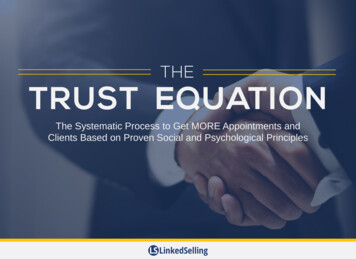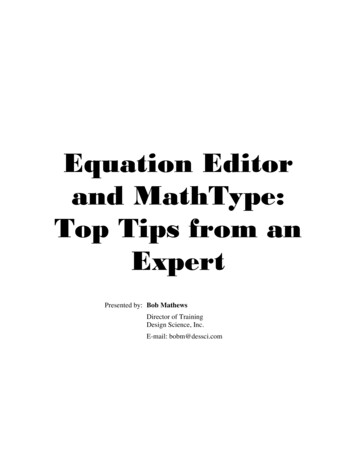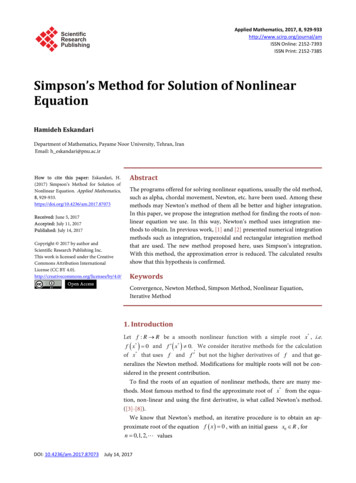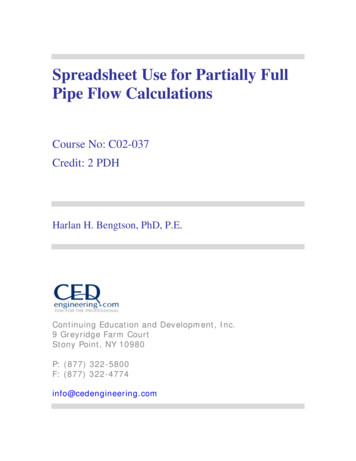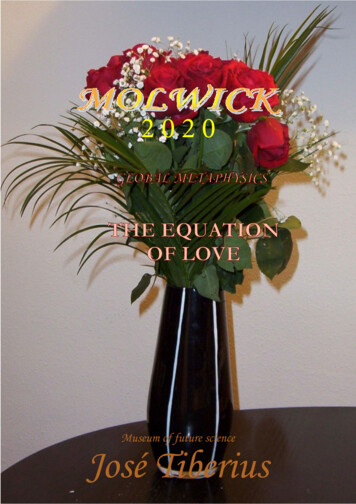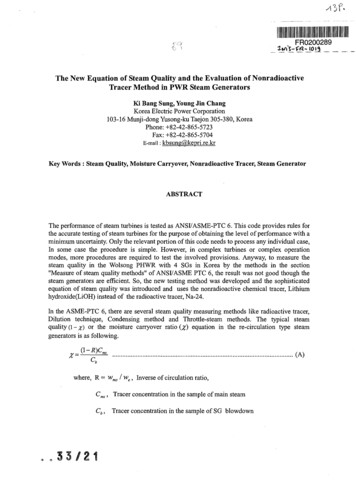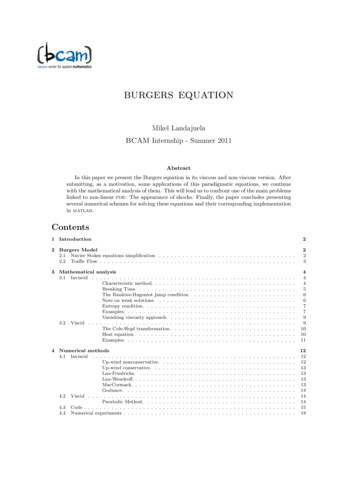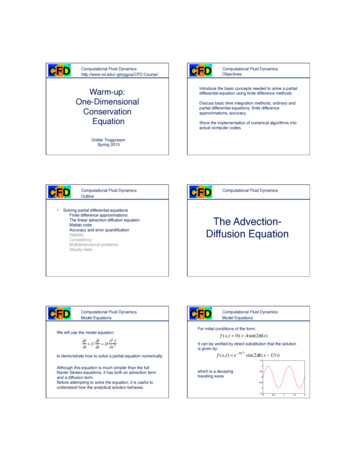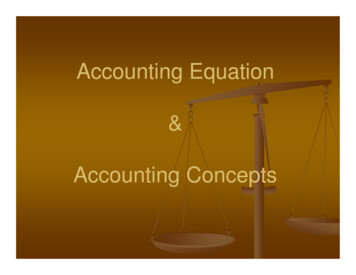
Transcription
Accounting Equation&Accounting Concepts
5 Ways to Classify Accounts1.2.3.4.5.AssetsLiabilitiesOwner’s EquityRevenueExpense
Asset Asset own Anything of value that is owned Used to acquire additional assets or to operate abusiness Examples: cash, petty cash, supplies,equipment, accounts receivable, prepaidinsurance
Liability Liability Owe Amount the business owes to others Examples: Accounts payable, notespayable, other bills unpaid
Owner’s Equity Amount owned – amount owed Amount remaining after the value ofliabilities is subtracted from the assets Owner’s equity – amount of businessactually owned by the owner
Owner’s Equity1.2.2 Most Common AccountsCapital – summarize owner’s equity inbusinessDrawing – used when an ownerwithdraws either cash or merchandise forpersonal use.
Revenue Any income earned from the sale of goodsor services and results in an increase inowner’s equity. Examples: Sales, Services
Expense Price paid for goods or services used tooperate a business, resulting in a decreasein owner’s equity Examples: Rent, Utilities, Advertising,Wages
Accounting EquationAssets Liabilities Owner’s Equity
Double EntryEntry-System Also called Duel Entry System Accounting Equation must always be inbalance
Transactions Changes in the accounting equation Must always change 2 accounts to keepthe accounting equation in balance Will always have a debit and a credit
T accounts Used to keep balances of accounts Left side Debit Right side CreditAccount NameDebitCredit
Normal Balances Side of account which increases Assets Left side increases Liabilities Right side increases Owner’s Equity Right side increases
Accounting Framework All businesses must use the samereporting practices to record financialinformation.GAAP – Generally Accepted AccountingPrinciplesSEC – Securities and ExchangeCommissionFASB – Financial Accounting StandardsBoard
AICPA American Institute of Certified PublicAccountantsNational professional organization of CPAsProvides CPAs with resources, information,and leadershipAdvocacy, Certification and Licensing,Recruiting and Education, and Standardsand Performance
12 Accounting Concepts1.Entity – Accounting records are kept forentities and not the people who own orrun the company. Business is considered its own person A business can marry (merger), havekids (subsidiary), and die (discontinueoperations).
Accounting Concepts2.Money-Management – for an accountingMoneyrecord to be made, it must be able to beexpressed in monetary terms. Financial statements show only alimited picture of the business.
Accounting Concepts3.Going Concern – financial statements areprepared with the expectation that abusiness will remain in operationindefinitely. Assets cost can be (amortized)spread over its expected life. Liquidated – how quickly or the easean asset can be converted to cash
Accounting Concepts4.Historical Cost – the price paid to acquirethe asset. 5.“worth” changes over timeDual Aspect (Accounting Equation)Assets Liabilities Owner’s Equity
Accounting Concepts6.Objectivity – accounting entries will berecorded on the basis of objectiveevidence. Source documents: invoices,receipts, bank statements, calculatortapes All information comes from sourcedocuments and is based on FACTnot opinion.
Source Documents A business paper which information isobtained. Prove a transaction has occurred. Examples: checks, purchase orders,invoice, receipts, calculator tapes,memorandums
Accounting Concepts7.Time Period – specific interval of time forwhich an entity’s reports are prepared. Fiscal year (July 1 – June 30) or12 month period Natural year(January 1 – December 31) Once a time period is set, it must notchange
Accounting Concepts8.Conservatism – understating rather thanoverstating revenue (income) andexpense amounts that have a degree ofuncertainty. Rule is to recognize revenue when it isreasonably certain and measurable andrecognize expenses as soon as reasonablepossible.Better to err on caution than to inflate oroverstate positive results.
Accounting Concepts9.Realization – Revenue (income) isrecognized when earned or realized. Seller receives cash or has a claim tocash (accounts receivable) after asale of goods or services. Recorded when received, not whenawarded
Accounts Receivable Customer has charged on account,“sold on account” Normal debit balance Asset account because money is owed tothe company and will be collected at alater date.
Accounts Payable Company buys something on account andwill pay at a later date. Normal Credit balance Liability account because money is owedto a vendor and must be paid later
Accounting Concepts10.Matching – Revenues and relatedexpenses must be recorded in the sameaccounting period. Avoids overstatement of income11.Consistency – Once an entity decides ona method of reporting it must keep thesame method for all subsequent events.
Accounting Concepts12.Materiality – accounting practice thatrecords events that are significantenough to justify the usefulness of theinformation. Example: We do not record atransaction each time we use asheet of paper as an Office SupplyExpense; instead we wait until wepurchase a large quantity and thenexpense it.
Accounting Concepts 10. Matching Matching ––Revenues and related Revenues and related expenses must be recorded in the same accounting period. Avoids overstatement of income 11. Consistency Consistency ––Once an entity decides on Once an entity decides on a method of reporting it must keep the same method for all subsequent events.

